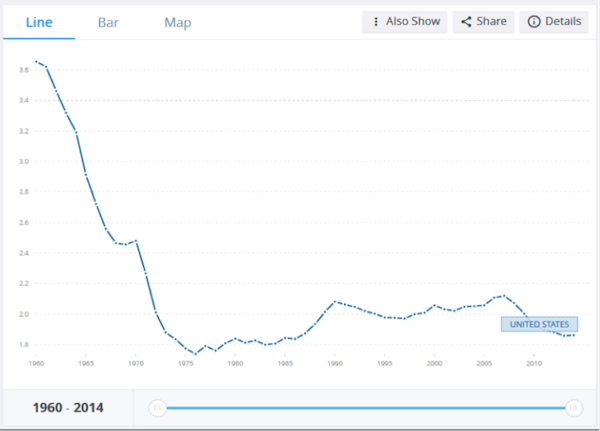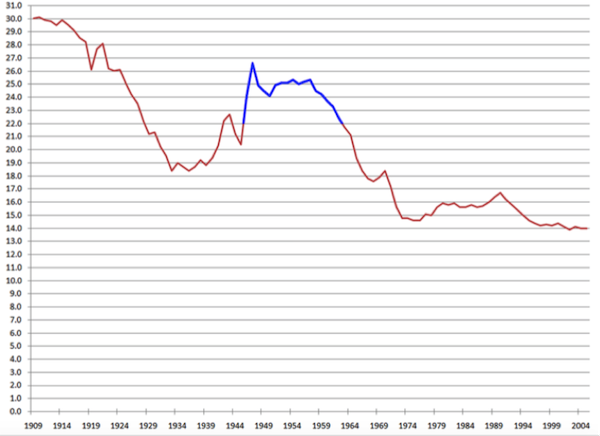The US Is Going Through a Profound Demographic Shift That Will Affect Everyone
- Patrick Cox
- |
- March 6, 2017
- |
- Comments
BY PATRICK COX
The US fertility rate fell again last year, marking the lowest rate of reproduction since the CDC started keeping records in 1909. This prompted the amusing Bloomberg headline, “Make America Mate Again.”

The above chart shows that in 2015, there were only 62.5 births per 1,000 women of childbearing age. That fertility rate dropped even further, touching 62.3 births per 1,000 women, in the first half of 2016.
Demographic Headwinds
To put the fertility rate in perspective, it is now at about 1.85 births per woman. To maintain a stable population requires at least 2.1 births per woman. The US has been at or below the replacement fertility rate since 1972, as the chart below shows.

Demographers worry that a dwindling birth rate will hurt economic growth and tax revenues needed to fund transfer payments to a growing elderly population. Some project that fertility rates will rise when the economy expands.
If the Trump administration achieves higher economic growth, it’s unlikely to do so fast enough to support the mandated 9% increase in entitlement spending for older Americans without more deficit spending. Trump says he intends to preserve Social Security and Medicare spending levels, but he seems unaware of the demographic headwinds we are sailing into.
Few policymakers grasp the profound impact of an inverting demographic pyramid, simply because it has never happened before.
The Cure for a Broken Dependency Ratio
History does show, however, that there’s been a persistent downward ratchet effect in the US fertility rate: the downward movement may be temporarily interrupted, but then it resumes again.
Moreover, this is a long-term trend. Fertility rates began falling prior to World War II, despite the temporary uptick that led to the baby boom (blue segment of line). This chart shows births per 1,000 people in the US.

In short, the population dynamics that have broken the dependency ratio and created the unfunded liability crisis worsened in 2016. This dynamic won’t change fast enough to prevent a crisis that can only be fixed by extending health spans.
With longer health spans, older people can live healthier and longer and be more economically productive. They can then support their own retirements instead of relying on fewer and poorer young people to do so.
Subscribe to Patrick Cox's Investment Newsletter, Tech Digest
Be the first to learn about vast profit opportunities most investors have never dreamed of. Biotech expert Patrick Cox spotlights the latest breakthroughs and the innovative companies producing them each week—from non-invasive cancer treatments, to age-reversing nutraceuticals, to vaccines that kill any virus. Get Tech Digest free in your inbox every Monday.
